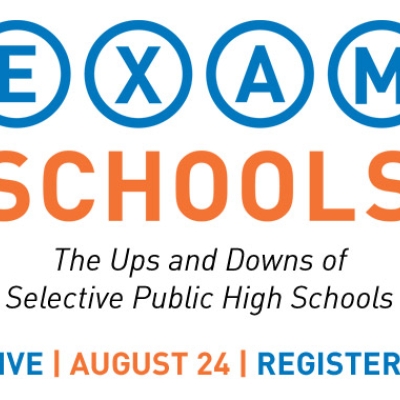On November 5th, Colorado voters head to the polls to decide whether they want to substantially raise their taxes to better fund schools (and, separately, to regulate their newly legal pot—but more on that some other time). The plan, known as Amendment 66, is spearheaded by State Senator Mike Johnston (D) and funded by a coalition of teacher unions and others. It would raise income taxes by $950 million by ditching the state's flat tax of 4.63 percent. In its place would be a system with two rates: 5 percent for incomes at or below $75,000 per year and 5.9 percent for incomes above $75,000.
Passage of the amendment would green-light a previously passed and wide-ranging bill, also led by Johnston, designed to revamp the existing school-funding formula and divvy up the new money, if taxpayers decide to provide it. The bill has some ideas that, by themselves, should be fairly popular. For example, it lifts caps on preschool and Kindergarten enrollment, moves away from an easy-to-manipulate, single enrollment-count day, and refreshes the funding formula to weight for poverty and ELL status, among other factors. But, to many others, the cost to taxpayers seems outrageously high.
Supporters and opponents are sharply at odds when it comes to what this proposal might mean and, of course, whether it should pass. But those on both sides feel certain of one thing: The final result is sure to be a nail biter. Here’s a breakdown of five factors that could make the difference on Tuesday:
- The price tag. Naturally, adding pre-Kindergarten comes with a price. Furthermore, any funding-formula change will create winners and losers. And as it is typically politically impossible to slice up the same pie a different way—even if it's a fairer distribution—the pie must be big enough for everyone's slice to be at least as big as it was before. But that isn’t a good enough reason to raise taxes and by so much, say opponents. As Gabby Reed, policy director on the Colorado House Republican staff, asserted in an email, ”Colorado currently has $1.6 billion sitting unused and unallocated in our State Education Fund. Additionally, we are expected to bring in another $1.6 billion [in] revenue above 2013–14 levels in the next year. Instead of going to the ballot for the largest tax hike ever in this state, we should use existing resources.”
- Advocacy. On the other hand, supporters of the initiative are extremely well funded and have strong organizational backing from Governor John Hickenlooper and other supporters of education reform, including from some recognizable names like Bill Gates and Mike Bloomberg. “This is a proposal that keeps Colorado’s tax rate competitive with other states while providing substantial return on investment,” Gov. Hickenlooper said in a statement when the initiative launched. “If we’re successful, it won’t just benefit the students who graduate ready to join the workforce or go on to college, the measure will benefit the entire state by creating a better workforce for new and existing businesses.”
- Polling. There don't seem to be any independent polls conducted on the ballot measure, but Magellan Strategies conducted a poll in September. Among respondents who heard a brief description of the measure, 38 percent were in favor and 44 percent were in opposition. Among those hearing a more detailed description, 38 percent were still in favor, but this time, 52 percent were opposed. The neutrality of the questions is debatable, but this poll still reveals a strong challenge for supporters to overcome.
- Political winds. Until Barack Obama's two consecutive victories, Colorado hadn't voted for a Democrat twice in a row since FDR. But recent recall elections over perceived overreach on gun control, which resulted in two Democrats losing their seats, may mean the pendulum is swinging in a slightly more conservative direction. Still, the recalls were only in select districts, and many feel the Democrats's recent electoral victories are due to a permanent demographic shift. And there are other shifts that could also change the makeup of the electorate, making polling unpredictable. Democrats enacted a new system for voting, in which every registered voter is mailed an absentee ballot—which, most agree, will help supporters of the measure.
- Messaging. The ballot question requires voters to explicitly endorse a measure that would allow “state taxes [to] be increased by $950,100,000 annually.” So, perhaps, proponents of the measure are working to prevent a measure of sticker shock through their messaging that specifically highlights the cost (proponents claim $133) to the individual family. If the measure does pass, however, proponents will have to live up to some promises that may be quite hard to keep. Ads flooding airwaves in the state guarantee “more teacher aids for $133 a year,” that the measure can “bring back gym class for $133 a year,” and even that “Amendment 66 keeps money out of administration.” Certainly some districts may choose to spend money on these items, and there is language in the bill designed to ensure they will. But even if new dollars are restricted, existing dollars are not—and already there are fears that the money will simply be used to backfill teacher pensions or for other questionable expenditures.
Stay tuned, because Colorado voters' decision will have wide-ranging implications for education reform and the debate over whether spending is really the key to results. Should Amendment 66 pass, expect to see it become a template for similar efforts in other states.
